People & Blogs
doing donuts in the snow.
The Truth About the Murder of Mary Phagan - Jake Shields Interview with Mary Phagan-Kean on the Figh
The interview with Mary Phagan-Keane, grandniece of 13-year-old Mary Phagan, killed in 1913 at Atlanta’s National Pencil Factory, delves into her personal exploration, research, and stance on the contentious Leo
Frank case. Frank, the factory superintendent convicted of the murder, remains a divisive figure amid accusations of antisemitism and historical reinterpretation, particularly by the Anti-Defamation League (ADL).
Personal Connection and Discovery
Family Silence: Named after her great-aunt, Mary learned of the murder at 13, as her family, guided by her great-grandmother, had concealed it. Her mother discovered it concurrently.
Traumatic Experience: At R.V. Stall High School in Charleston, a teacher’s query about her link to Mary Phagan, followed by classmates’ taunts about being “dead” or “reincarnated,” profoundly impacted her.
Father’s Perspective: Surprised the case resurfaced, her father briefly labeled Frank a “sexual pervert” who murdered Mary after she collected her wages and was later lynched by a vigilance group.
Curiosity and Research
Growing Fascination: After relocating to Atlanta at 15, frequent questions from teachers at Shamrock High School about her connection sparked her interest in the case’s significance and her father’s reticence.
Archival Revelation: At the Georgia Archives, a vivid image of Frank’s lynching motivated Mary to seek the truth, with her father encouraging independent investigation.
Research and Evidence Collection
Archive Donation: Mary contributed her 57-year collection of case documents to the Georgia State Library to challenge claims of Frank’s innocence.
Source Analysis: Early books (1913–1950), such as Guilty or Not Guilty by Francis X. Bush, provided balanced views, while later works like Night Fell on Georgia and A Little Girl Is Dead showed inconsistencies. The trial transcript is missing, but Mary possesses a “brief of evidence” supporting Frank’s guilt.
Case Details and Evidence
Crime Summary: Mary Phagan was murdered after collecting her $1.20 paycheck. Frank’s conviction hinged on his inappropriate conduct, inconsistent statements, and physical evidence.
Grand Jury and Witnesses: A grand jury with four Jewish members unanimously indicted Frank, undermining antisemitism claims. Witnesses verified Frank’s harassment, contradicting his claim of unfamiliarity with Mary.
Defense Tactics: Frank’s eight-lawyer team employed racial strategies, implicating Black janitor Jim Conley and planting evidence linked to Frank.
Trial Result: Frank was convicted in four hours, with 13 appeals rejected and no court questioning his guilt. Alleged bite marks and murder notes were later disproven as fabrications.
ADL and Historical Revisionism
ADL’s Role: Established partly to defend Frank, the ADL is accused of concealing evidence, manipulating search results, and destroying records to frame Frank as a victim of antisemitism.
Alonzo Mann’s Testimony: In 1982, Mann’s inconsistent claim of seeing Conley with Mary’s body spurred a pardon effort, which Mary believes was coerced. The 1983 pardon request was rejected.
1986 Pardon: A discreet posthumous pardon, backed by the ADL, was granted without addressing Frank’s guilt, excluding Mary’s family.
Grave Marker Issue: A 1994 marker for Mary Phagan’s grave was replaced in 1995 after a rabbi’s objections, omitting key details. Mary later installed her own marker.
Countering Misinformation
Antisemitism Claims: Mary points to the Jewish grand jury members and absence of antisemitic references in newspapers to debunk bias allegations. Frank’s mother’s comment was the sole instance.
Vigilance Committee: The lynchers, prominent Marietta citizens, acted for justice, not antisemitism, despite ties to the Ku Klux Klan.
Media Distortions: Later books, an NBC miniseries, and the Parade musical misrepresented the case, falsely depicting Mary Phagan as flirtatious.
Ongoing Advocacy
Conviction Integrity Unit: In 2019, the ADL and others pushed for Frank’s exoneration, but Mary found no public records, indicating secrecy.
Public Engagement: Through her website, littlemaryphagan.com, and a 2025 book with 16 new chapters, Mary seeks to expose ADL tactics. She uses podcasts and Twitter community notes to counter misinformation.
Personal Reflections
Emotional Toll: Discovering the case at 13 was distressing, and Mary remains troubled by her great-aunt’s defamation.
Family Support: Her adoptive Jewish grandparents and her father’s Jewish friend supported her work, emphasizing her focus on ADL manipulation, not the Jewish community.
Life’s Purpose: Childless due to her husband’s illness, Mary views her research as her mission to honor Mary Phagan’s legacy.
Conclusion
Mary Phagan-Keane’s interview highlights her lifelong commitment to preserving her great-aunt’s memory against ADL-led efforts to clear Leo Frank. Through thorough research, she has debunked falsehoods and upheld evidence, framing the case as a pursuit of justice for a murdered girl, not a matter of antisemitism.
ADL Defends Notorious Pedophile on Twitter Leo Frank Guilty of Raping and Murdering 13 Year Old Girl
It is our grave obligation to embark upon a scholarly exposition concerning the genesis of the passionately zealous Anti Defamation League. Anna Perez, the eminent presenter of Wrongthink and Wake Up America, shall partake in a sagacious colloquy with Stew to elucidate the intricacies of the ADL and to expound upon how the communal elucidations on X have rectified the chronicle pertaining to the notorious miscreant and malefactor, Leo Frank.
Leo Frank was adjudged culpable of perpetrating the heinous deeds of ravishment and slaughter upon the youthful Mary Phagan, a tender maiden of merely thirteen summers. Frank, in concert with his juridical advocates, endeavored to impute the ghastly transgression to an unlettered custodian of African lineage. Nonetheless, the grand jury, encompassing persons of the Judaic persuasion, formally indicted Leo Frank for the homicide. Thereupon, he was rightfully condemned within the hallowed precincts of a tribunal.
Subsequently, the Governor of Georgia, in an act of clemency, transmuted his capital punishment into a sentence of lifelong incarceration. This resolution so incensed a faction of Georgia’s citizenry that they forcibly invaded his place of confinement, extricated him thence, and proceeded to suspend him from a timber gibbet as requital for his iniquities.
The fate that befell Leo Frank ought to serve as a paradigm of the condign chastisement for those who prey upon the guileless youth of our commonwealth. Such malefactors should encounter the utmost sanction, and it is contended that the quintessential mission of the ADL hinges upon obfuscating the verity regarding a slayer. Beneath the specious mantle of "Pride," proponents of the political left labor to sanction amorous congress with minors and the abhorrent custom of pedophilia. The ADL, it is posited, is an accomplice in this nefarious stratagem, as evinced by their vindication of Leo Frank and their advocacy of a reimagined historical narrative.
Engage with this novel discourse forthwith at
https://StewPeters.com!
Safeguard our continued liberty and presence on the airwaves by patronizing the benefactors enumerated below! Fortify your pecuniary prospects and affluence, and procure up to $10,000 in complimentary silver by availing yourself of this link:
https://goldco.com/stew
EXCLUSIVE: The grand-niece of Mary Phagan Kean, tragically slain in 1913 by an individual of nefario
EXCLUSIVE: The grand-niece of Mary Phagan-Kean, tragically slain by the nefarious Leo Frank in 1913, unveils the sinister machinations of the ADL and the egregious transgressions perpetrated by certain Jewish factions.
Witness this groundbreaking transmission immediately at
https://StewPeters.com!
The bastions of Western civilization have succumbed to a pernicious infiltration of alien ideologies and principles, covertly woven into our societal fabric by corrupt and morally bankrupt intruders bent on global domination. Our autonomy has been wrested from us. View the cinematic revelation without delay!
https://stewpeters.com/occupied/
Elevate yourself to the ranks of an SPN subscriber, thereby gaining access to exclusive content and securing premier privileges, such as private discourses with Stew, coveted invitations to distinguished gatherings, and participation in live symposiums. Commemorate Stew's birth month with a $31 discount! Seize this auspicious opportunity to revel and bolster our resounding declaration! Obtain a $31 reduction on your annual subscription to his Locals community—typically $90, now a mere $59 for your first year! Act swiftly, as this offer is fleeting. Let us celebrate as one ����
https://stewpeters.locals.com/....support/promo/BIRTHD
Explore the Stew Peters Emporium for all accoutrements related to the Stew Crew and beyond!
https://spnstore.com/
These steadfast and valiant patrons chose to align with us despite censorious resistance. Bolster their resolve below:
Cortez Wealth Management crafts financial strategies for you and your lineage. Discover how you can entrust this America First advisory firm and protect your retirement prospects promptly by calling 813-448-3446 or visiting
https://cortezwm.com
A growing populace grapples with diminishing vigor, cognitive haze, articular anguish, and myriad chronic ailments. Achieve genuine relief in just 5 days—join Stew in the 555 Challenge and unlock the possibilities! Begin at
http://My555Challenge.com
today!
Where are your monetary resources? The IRS seeks to render you impotent, yet a path to emancipation exists. No mandate compels 99% of Americans to submit and pay income tax. Proceed to
https://freedomlawschool.org/stew
for further enlightenment from Freedom Law School.
Red light therapy is empirically proven to prevent and conquer cancer, autoimmune conditions, thyroid impairments, arthritis, dementia, and tinnitus while delivering exceptional outcomes in weight reduction, wrinkle elimination, acne improvement, and stem cell renewal. View medical chronicler Jonathan Otto's free seminar and acquire the finest at-home red light therapy devices at the most competitive prices. Visit:
https://myredlight.com
and apply the promotional code “STEW10” for an additional 10% discount on your purchase!
Unleash your optimal digestive prowess with MassZymes from Bioptimizers! Travel to
http://bioptimizers.com/stewpeters
and input coupon code STEWPETERS at checkout to receive 10% off your order!
��️ Safeguard Your Loved Ones with Zelenko’s Medical Kit ��️Now available for purchase! This comprehensive kit includes essential pharmaceuticals like Ivermectin, Hydroxychloroquine, and Other Vital Medications. Obtain Your Zelenko Medical Kit Now:
https://zstackprotocol.com
and use promo code "SPN" for $48 off and free shipping!
Join our allies
@AbovePhone
for a complimentary webinar to master the art of maintaining multiple identities on a single device! ✅ Techniques for multiple identities on one apparatus ✅ Use cases for personal and professional profiles ✅ Approaches to achieve separation between profiles. Register:
https://abovephone.com/stewpeters/
Do not miss the opportunity to own this unique Holocaust encyclopedia. You may obtain yours by visiting
http://holocaustencyclopedia.com/
or at
https://armreg.co.uk/product/h....olocaust-encyclopedi
using promo code “stewlikesbooks” for 15% off your order.
Maintain cardiovascular vitality and embody the pinnacle of your being with Cardio Miracle by exploring:
http://HighPowerHeart.com
NO FILTERS: Purify your ENVIRONMENT with these top-tier air filtration systems, and protect yourself from shedding:
http://airwaterhealing.com/
Promo code “STEW”
Elevate your wellness by visiting
http://fieldofgreens.com
. Use code STEW to receive 20% off your first order! You will perceive the difference.
Stay informed with Stew by following him across all social platforms!
Locals:
https://stewpeters.locals.com/
X:
https://twitter.com/realstewpeters
Telegram:
https://t.me/stewpeters
Gab:
https://gab.com/RealStewPeters
GETTR:
https://gettr.com/user/realstewpeters
Truth:
https://truthsocial.com/@RealStewPeters
Harry Scott said in his deposition that Leo Frank admitted to being in his office every minute between 12:00 and 12:30 on April 26, 1913. That was the day Mary Phagan was suspected of was killed and also Harry claimed to have killed her. An exhaustive search turned up nothing of interest. When Leo Frank's attorney Rosser asked Mary if the metal in her pencil was damaged, Frank did his best to get her to say "no" instead of "I don't know." According to the customer's response, there was no reason for either of them to enter the metal room to check that the material had been delivered. The availability of the delivered metal was a condition for Mary to return to work the following Monday morning. The answer to Mary's question is important because it indicates whether you went to the metal room to check if you weren't sure if it was there. Frank's lawyer tried to keep Mary as far away from Frank as possible, as a strand of hair was found on the protruding arm of the lathe and traces of blood were found in the metal chamber. This discovery implicated Leo in the rape and murder of Mary Phagan, as key evidence indicating that Leo Frank was in the same room. Another witness who took the stand was a young woman named Monteen Stover, about the same age as Mary Phagan, who said she was in Leo Frank's office at the same time as the manager of the pencil factory. There. He said he was there at 12:05, but Leo didn't see Frank when he said he was there. He also went to a second (inside) office next to the outer office, but did not see or hear anyone inside the building. He also said the metal room door was locked. Another Leo Frank attorney, John Slayton, said Mary Phagan, the manager of a pencil factory, was not at his office at 12:07 a.m. when he arrived to collect his wages. Instead, John Slaton claimed, based on falsified records, that Leo Frank was in the back office when Monteen Stover was waiting for his customers to come out and pay. He issued a statement from the Governor, contradicting Monteen's personal and persistent story that Leo was not in his inner or outer office when Frank found him, and that Leo was in his office at the same time. Monteen's testimony does not bend or bend under the pressure of John M. Slaton, the governor and lawyer who deceives Leo.
Gantt went on to testify that he was shocked to see that Leo Frank appeared to have fallen from the sky. Another witness, J.A. White told her husband that she went to work twice that Saturday, the day before (11:30 p.m. and 11:50 p.m.) and in the afternoon (12:30 a.m.) where Jim Conley, a plant manager of color, was staying in the hallway.
He said he saw something there on the first floor. The floor between the stairs and the door. Leo Frank said that Mary Fagan came to the factory around noon (or shortly thereafter) to collect her weekly wages, as she had been laid off on Monday. He left after asking if the pencil holder had arrived, and as he left, Frank said he thought he heard other people's voices near the stairs. In those 40 minutes, Leo Frank had direct access to Mary Fagan, Jim had the opportunity to rape and kill Mary Fagan by giving her the closest alibi, and Jim Conley was involved in the murder to help him.
The next witness was Leo Frank's private investigator, Harry Scott. He said he knew because the manager of the pencil factory, Mary Fagan, had been fired a week earlier. This further undermined Leo Frank's credibility as he initially refused to admit that he did not know. It absolutely is. At the same time, Leo Frank Pinkerton pointed out to Detective Harry that Gantt was closer to Mary Fagan than he was, and did so several times to avoid the suspicions of his staff.
She did so by saying that Gant always paid attention to her and was very interested in her. Leo Frank Law Group attorney Herbert J. Haas asked lead investigator Harry Scott of the Pinkerton Detective Agency to turn over all the evidence he had collected before the trial, but the police promptly refused the officer and his colleagues. team.
The officer also testified that in order to obtain additional information from the night patrol, Leo Frank and Newt Lee were placed in a room next to the manager of the pencil factory and had a private conversation for 10 minutes. Newt Lee insisted on his innocence and stuck to the original story, while Leo Frank's strained language made him the prime suspect in the crime.
In the third article on the Leo Frank case in the September 1915 issue of Watson magazine, Sargent Dobbs describes what he saw on the morning of April 27, 2013, after Newt Lee called him and his team. He confirmed Newt Lee's earlier claims that Mary Fagan's body was found lying face down and accused a third party - a "tall black bastard" - of attempting the murder. Jim Conley, the manager of the pencil factory, was blamed. Another officer and witness, identified as John N. Starnes, took a fingerprint sample from the back door, which showed bloody prints. Jim Conley's attorney, Wm. Smith was willing to give the money to his client and even asked for his fingerprints twice, but received no response from Leo Frank's legal team.
The next few witnesses V.M. Smith and John Black were sent by John N.
town officials to pick up Leo Frank. Starnes sent Mary to the morgue to see her reaction to seeing her body.
Without even looking at Mary Fagan's body, Frank went into another room and went straight to the pencil factory.
There, Frank pretended to confirm that Mary Fagan worked for him and left shortly after noon.
(Afternoon).
Mary Fagan was found in such a dangerous and disheveled condition that none of the witnesses were able to identify her as the white girl.
John R.
Black testified against Frank because he was the one who went with Rogers to pick up Leo Frank, who appeared nervous on the way to the morgue and the police station, from his home. Mr. Haas, Leo Frank's attorney, John R.
Black and Mr. Scott go to Newt Lee's house and find a bloody T-shirt.
Another witness, Rogers, told police that Newt Lee was under arrest at the time and was with Gantt at the time of the crime when Leo Frank came to retrieve a pair of shoes from Gantt's possession.
Abandoned. This was meant to allay the suspicions of plant manager Jim Conley, while criticizing Newt Lee and Gant. When Gant appeared in court to testify, he said that he had been fired from the factory on April 7, 1913, and that he and Leo Frank had known Mary Fagan since they were children. This testimony contradicted Frank's testimony that he lost all credibility before the jury that he barely knew Mary Fagan as a salaried employee and paid her a weekly wage.
The passage goes on to compare the Becker case to the Frank case, with the judge refusing to let the former case proceed and the defendant's attorney calling the former case's trial "a sham." The judge defended the prosecutor in the case, but Leo Frank's Jewish lawyer wanted the case to continue. But the US Supreme Court ruled that Frank's rights had been violated. In a racist hit piece against Jim Conley, Jewish media outlets like the Daily claimed that Frank was falsely accused of being a black criminal with a clean criminal record before becoming an accomplice in the rape and murder of Leo Frank . Georgia law does not only require evidence of accomplices to convict a criminal. That is why Leo Max Frank was indicted. Otherwise, the judge would have been charged with perjury. Neither Frank nor his accomplices were ever convicted of murder. Mary Fagan was a very good Christian girl in Adriaal's class at the First Christian Bible School. His mother was Mrs. J.W. Coleman said the last time he saw his daughter was what she was doing before she died and that her clothing and appearance matched what he saw at the crime scene. Other witnesses, such as George Epp, also came forward and said where Mary Fagan was last seen before her death (the witness was riding the tram with her) and later said she was never at the stadium. The next witness was Newt Lee, the night watchman who discovered Mary Fagan's body the next day and claimed that Frank wanted her to come in early. Newt said that Gant had come to retrieve two pairs of shoes he had left behind while working at the factory, and Frank asked Newt Lee, who is black, to find the shoes from a former employee. That night, on his way to the laundry after being called by nature, he accidentally discovered Mary's body in the basement and quickly reported what happened to the police. The next night, Frank was also questioned. A week at a local station. Attached to the body was a note identifying Jim Conley (identified as a tall, dark, lanky black man) and blaming him for the murder (identified in the note as Newt Lee, a black night watchman). Sergeant Dobbs, the police officer and eyewitness, later said he called at 3.25am on April 27, 2013, giving basic details of what he saw.
This case is mandatory study for all 8th grade students in Georgia, if you are interested in learning more about it, please read these two books:
1 - The Murder of Little Mary Phagan by Mary Kean, 1988
https://balderexlibris.com/ind....ex.php?post/2012/08/
2 - The Secret Relationship Between Blacks and Jews, Volume 3 the Leo Frank Case, the Lynching of a Guilty Man by NOI Research Group, 2016
https://vivaeuropa.info/en/the....-leo-frank-case-the-
Watson's article begins by pointing out several instances where murder is justified to protect a woman's honor and dignity. The first was a famous New York architect named Stanford White who owned a harem full of underage girls. The Jewish newspapers always promoted him in a positive light. He took the young and innocent Evelyn Nesbit, and when her mother sold her for money, he drugged her and forced her into rough sex. However, she returned to him as the affair continued for a while until a man named Harry Thaw saw her and married her. After Harry and Evelyn were married, they honeymooned in Europe, and he told her about his meeting with Stanford White.
This made Harry so angry that he shot Stanford for abusing his wife before they were married.
Despite the propaganda in the Jewish controlled media, 75% of Americans supported Harry Thaw. They claimed that Harry Thaw's finances allowed Stanford White to be released from prison after a nine-year delay in execution. Otherwise, he would have been executed, but so would powerful people, such as politicians and clergy.
The Jewish-run media seemed to have no problem with this. Jewish newspapers such as Hearst and the New Republic held the judge, the jury, and the entire state of Georgia guilty of the justice meted out to local residents against Leo Frank.
According to the Jewish media, it was an embarrassment to democracy because the perpetrators demanded justice for a Jew, but it was ignored when Jews did not openly participate and use violence to lead the revolution against oppression and tyranny.
Horrible. The Jewish press says that men who use violence to protect young girls from temptation are cruel, even if the general public sympathizes with them.
On the other hand, when there are Jewish crimes against Jews, as between Becker and Rosenthal, the Jewish newspapers are generally immoral, and biased.
Sometimes they expressed sympathy for Becker, a convicted Jewish criminal, and criticized another third party (consisting of non-Jews) who might have "done" him. In this case, it was to catch the Rose-Webber gang.
he is. It ensures their survival.
In Chapter 8, the Fulton County grand jury is sworn in by Judge W.D. Ellis for the Mary Phagan case. Leo M. Frank, the general superintendent of the National Pencil Company in Atlanta, Georgia testifies about his duties at the factory and his interaction with Mary Phagan before her murder on April 26, 1913. He explains that he gave her an envelope with her employee number and did not see her pay envelope after that. Frank also mentions that the foreman and other employees were present in his office before he went home and returned later. He describes his conversation with Lee, who they suspected knew something about the murder. Despite facing intense questioning, Frank remains composed as he finishes his testimony. Watch to find out more about what happens next!
Judge W.D. Ellis introduced the new Fulton County grand jury and heard Frank's story before the coroner's jury reconvened Monday afternoon.
The judge impeached the members, arguing that if they were to prosecute those responsible for the young girl's death, Phagan's case should take precedence over all others. "Mary Phagan's case requires your immediate and careful attention," the judge said of the case. You have the power of the state. A heinous crime was committed, and the welfare of the community, the reputation of Atlanta's public justice system, and the authority of the law require that this grand jury, along with all other law enforcement authorities, investigate and investigate as thoroughly as possible. This is to quickly bring the culprit to justice.
A grand jury resumed its investigation into Mary Phagan's death Monday at 2:30 p.m. Leo M. Frank.
Among the first witnesses called was Frank. He testified for three and a half hours, detailing his presence and actions on the day of the murder. Dorsey, the coroner's attorney, was interrupted by Chief Lanford's questioning.
Mister and miss Another witness called that afternoon was Emil Selig, who had occupied the Franks' house.
Frank's father-in-law is Selig. When Frank first testified, he said he was living in Brooklyn, New York and that he left Brooklyn in October 1907 to travel abroad before returning to the United States and working for the National Pencil Company. America's best. The post of chief inspector. He said responsibilities for the role include overseeing materials procurement, researching production costs, ensuring proper order entry and fulfillment and general production management. As usual on Saturday morning, Frank recounted how he arrived at the factory and went about his daily tasks until noon.
Since it was a holiday, there were only 11 employees in the factory, which made things a little easier. As he began to copy the order onto a delivery requisition, he recounted how Alonzo Mann, the clerk, and Miss Hall, the stenographer, left the building shortly after twelve o'clock. They say no one was in the office at the time.
Frank said: “He killed that little girl. "He came around 12:10 or 12:05 and took the envelope." I haven't heard or seen anyone with him. I heard him talking to someone outside. When he arrived, I was in the office taking orders. I don't remember what he said. I looked up and realized that the employees were coming to pick up their pay envelopes. When he said he would, I handed him my envelope.
To save myself the trouble of going to the safe every time, I put them all in a basket near me. Frank said he didn't know Mary Phagan's phone number. The employee number is printed on each envelope, he said.
He admitted that he had looked up Mary Phagan's phone number after the murder, but had forgotten it.
After handing him the payment envelope, he said he had never seen it. He claimed that he did not enter the payments on pay stubs or other documents because the data was not required.
The girl left. As he walked out the front door, he asked about the condition of the medal. No, no, I told him.
He explained that Phagan's son had been unable to work since Monday due to a lack of metal. He said the boy had $20 in his pay envelope. One reason is that he worked Friday and Saturday the week before. He said he did not know her salary because he did not open the attached pay envelope when she left the company.
According to him, he heard her footsteps in the hallway and returned to work only to close the door due to the incident. Frank Phagan claimed he recognized the boy's face, although he did not know his name. He was partially behind her desk and couldn't see all the details of her dress, but said he thought it was brightly colored.
Her shoes and socks were hidden behind the desk, and he couldn't remember if she was wearing a hat, carrying an umbrella, or a bag. He said the girl came to his office between 12:10 and 12:15 and stayed there for about two minutes. He said he recognized him by the phone number, although he thought his name would be on the outside of the paid envelope.
The witness said no one else entered the office while he was there. In response to specialist research. He said he informed her that he was late when he left. In the far office he thought he heard her voice. After giving the envelope to the girl, she said she didn't add anything to her salary. At this moment, Frank said something shocking.
Five or ten minutes after Mary Phagan left, Lemmy Quinn, the head of the congressional department, entered the office. Frank said Quinn was only minutes away. After a short conversation, the director left at 12:25. me.
He said that Quinn, the head of the girls department, knew Mary Phagan. Frank said that before leaving the office, he went up to the fourth floor and met Mrs. C. White, Arthur White, Harry Denham, two boys working in the factory.
When Frank returned to the factory a short time later, he found White and Denim working on the third floor.
White borrowed $2 from him before leaving the building Frank left around 120 or 3am on Saturday. He said he followed them downstairs and locked the door for the afternoon. He says he's been doing it for a while.
He wrote in his financial statement that Mr. Lee arrived early in the afternoon and told him to come back, and that at 6 o'clock after the negro returned, Gant came to get his shoes. They said they left and arrived around 6:25. He described how he called Lee Myung-bak at work.
According to Frank, he went to bed at 11am. He then explained what happened the following Sunday.
Frank spoke to Lee at the police station and told him about the Monday after the murder. "They know you know something." When the detective told him to talk to the black man and get him to confess, Frank told the guard: He has the ability to shake us both if we don't say it. The investigators asked him what he should say.
After 6 o'clock, Frank left the stand and said he was not interested in the heated response and criticism he had received. Emil Selig and his wife, Mrs. Josephine Selig, followed Frank on the witness stand. Frank told reporters that despite the difficult experience, he was not at all tired or exhausted.
They gave virtually identical testimony, including that they saw Frank eating and drinking on Saturday, that he went to bed at 11 a.m., and that he got up on Sunday morning and went to the factory. They gave no indication that Frank was nervous during the 7.20 p.m. show. me. The investigation was adjourned to 9:30 a.m. on Thursday. During the period between Frank's statement and the cross-examination of his statement, other witnesses were allowed to be called.
Lemmy Quinn, who initially told investigators he was not at the pencil factory on Saturday, later admitted his mistake. He claimed that he had forgotten about his visit and that he had only been in Frank's office for a short time, a minute. When the inquest resumed on Thursday morning, he angrily refused to offer a bribe to protect Frank. Six witnesses testified. Boots Rogers, Lemmy Quinn, Miss Corinthia Hall, factory workers and Miss Hattie Hall, factory stenographer.
However, Judge J.L. Watkins and Miss Daisy Jones were subjected to rigorous cross-examination to refute claims that they had been in the factory on the day of the accident. Quinn stayed true to his story late into the evening. It had been a long time since Mary Phagan had expected to put the envelope with the payment and leave. Botts Rogers said in his testimony that Frank changed the watch band while officers were at the factory on the Sunday morning after Mary Phagan's body was discovered. He then asked for the knife he had taken from the watch.
Rogers also described Mr. Frank's behavior when the police went to his home on Sunday morning to take him to the factory. Production worker Corinthia Hall told the court that Mr Frank had not been reprimanded for the way he treated the girls at the factory. He also testified that he met Remy Queen at a restaurant near the factory around noon on Saturday, supporting his visit to the factory on the day of the accident. In his presentation, J.L. Watkins said he thought he saw Mary in the street near his house at around 5pm on Saturday but mistook Miss Daisy Jones for Mary Phagan. This was also the subject of Miss Jones's evidence.
Detective Harry Scott of the Pinkerton Agency was one of the first witnesses called at the hearing Thursday afternoon. He was Schiff's assistant, the manager of the pencil factory, who was fired after receiving a brief explanation. Scott made the most surprising revelation when he revealed that one of Frank's lawyers, Herbert Haas, had asked the police to withhold all evidence until Haas had a chance to examine it.
Scott said he informed Haas that he was the first person to dismiss the case. Scott replied, "No, I'm still working at the Pencil Factory." Detective John Black followed Scott to the witness stand and explained that he had found a bloody shirt at Lee's house on Tuesday afternoon after he was killed. When Frank and Newt Lee talk together at the police station, Frank tells Newt Lee that if he keeps talking, he and Newt will go to hell.
This is what happened when Newt Lee told the story. On Saturday afternoon he talked about Frank's nervousness. Mr. Lee replied that since the bloodstained shirt was found at his home, when investigated, it would definitely be his.
The four dresses I bought at the store were made by a white woman and are not hers. Called back to the stand, Frank testified to general questions about elevators, clocks, Saturday afternoon work, work that evening and Sunday morning, and the daily operations of the plant. City investigators then called several witnesses.
Tom Blackstock said that Frank touched the girls in the factories and learned to abuse them. Miss Nellie Wood, of Eight Korput Street, said she had worked at the pencil factory for about two years. She said that Frank was so famous that she didn't like that they were trying to pass him off as a joke. She also claimed that Frank would approach her and touch himself when it was inappropriate and that Mrs. Frank did nothing but smile and wink at the girls.
Located at 165 West 14th St., Donegan said he worked at the plant for three weeks about two years ago.
When the hero witnesses finished their testimony in the afternoon, the entire court breathed a sigh of relief as they realized that the now famous Phagan case would be heard by the panel that had been invited to examine it. At ten minutes past 6 a.m. on a Thursday in May 1 1913, Mary Phagan died at the National Pencil Factory.
Judge Donahue began his address to the jury with the indictment.
"You listened to the local doctors," he said. You witnessed the cause of death.
You've heard the evidence of the case and seen the body. It is your responsibility to thoroughly investigate how Mary Phagan died. You swore to do this. When someone dies of natural causes, it is your responsibility to find out who caused that death. A local doctor said the cause of death was asphyxiation. We look at the evidence to determine who is guilty of the crime. If another party is involved or tries to protect the criminal, he or she is equally guilty.
In this case, instead of going to court, you will go to bail court. If you have reasonable suspicion that someone was involved in this crime, it is your duty to pursue someone. You can also subpoena important witnesses to prove your case. We reserve the right to detain anyone who is not directly involved in the incident but who we believe may contain sensitive information. It is your responsibility to charge someone with a crime if you believe information is not being disclosed. The judging company consisted of six people, who appeared one after the other.
The crowd remained still. They were back in 20 minutes. The bishop rose and pronounced the sentence.
A coroner's jury found that Mary Phagan had been strangled to death, and the owner of the pencil factory, Leo M. Frank, and the night watchman recommended that Newt Lee be held pending a grand jury investigation.
Frank and the negro were taken to the tower where the sentences were pronounced.
Deputy Plenny Miner broke the news to the inmates after the first round of testimony. Frank was reading the evening paper in the tower hall. When he approached him, the deputy informed him that a grand jury had recommended that he and Lee be held for further investigation. "It was no better than I expected." Frank told him. Nothing more was said. Newt Lee's discoveries made his influence even more evident.
He hung his head in great sadness and continued to mutter, "I didn't do it, white collar people."
Leo M. Frank, a supervisor at the National Pencil Factory, was taken to the police station early Tuesday morning, April 29, and arrested for the murder of Mary Phagan. From that day he was never free.
He was no more suspicious than silly old Lee, young giant Gantt, or ex-conductor Arthur Mullinax. He was a thin, childish, weak and frail man. The best way to understand who he is is what he himself said before the jury that decided his fate nearly four months later. "I was born in Paris, Texas, on April 17, 1884," he said. "When I was three months old, my parents moved me to Brooklyn, New York, where I stayed until I moved south to Atlanta. I attended Brooklyn Public Schools and Pratt Institute in Brooklyn, New York, and settled here after college. I entered Cornell University for a mechanical engineering course in the fall of 1902 and studied there for four years until graduating in June, 1906. Then I agreed to work at the B.F. Sturdevant as a draftsman. This is a solid company based in High Park, Massachusetts. The National Meter Company in Brooklyn, New York hired me as a test engineer and draftsman after about six months with the company. Then I moved back to Brooklyn.
I continued in this position until the middle of October, 1907, when I was invited by the citizens of Atlanta to discuss the establishment and operation of a pencil factory to be located there. After spending about two weeks here, I left for New York, where I booked a ticket to Europe. Nine months later I was in Europe. Traveling abroad. I researched the pencil industry and oversaw the installation and testing of previously contracted equipment. I returned to the United States early in August, 1908, and went direct to Atlanta, which has since been my home."
I got married in Atlanta. She is a woman from Atlanta. Mrs. Lucille Selig. My wife's in-laws, Mr. and Mrs. Dot E, have been our guests for most of our married life. 68 East Georgia Ave., Selig. On Tuesday morning, before noon, Frank was arrested by the police at the pencil factory. Less than 10 minutes later, Frank was taken into custody and escorted from the police station by Pinkerton Bureau Detective Harry Scott and City Detective John Black.
Newport Police Chief A. Lanford announced that he would be arrested pending the completion of the investigation. News of this arrest spread quickly. There has been much speculation about Frank's involvement in this incident. Many friends came to help him. Many people who never met him argued that he must be guilty.
By his own admission, Frank was the last person known to have seen Mary Phagan alive and made the following disparaging comments about what was known at the time: When Nutri arrived at the factory in the afternoon, he was nervous, and that evening he called Nutri to let him know that he had called. Gant felt anxious when he arrived at the factory on Saturday afternoon. When the police took him to the factory on Sunday morning, he felt uncomfortable. After his arrest, Frank's friends were outraged. They immediately called Luther Z. Rosser is one of the best attorneys in Atlanta. While Frank was being questioned by detectives, Rosser immediately called the station and spoke to his client. Frank had a long conversation with Harry Scott, Pinkerton's investigator who, in addition to his lawyers, was employed by the factory workers. The Tuesday before the inquest in which four suspects were found guilty of murder saw the highest level of public protest since then. Opinions differed as to who was the culprit. Although many blamed the company's white manager, Leo Frank, or Newt Lee, the pencil factory's most common black employee.
Suspicions against Gants and Mullinax were soon raised. The factory, the suspect's home and the entire town were searched by city detectives and Pinkerton units.
When it was learned that Mary Phagan had been murdered in the basement of the National Pencil Factory, the city of Atlanta was more concerned than ever. The famous Grace incident was the excitement it created. There has been a lot of interest in the trial of Ms. Callie Scott Applebaum. But the mystery surrounding Mary Phagan's murder and the abomination of the act created a sensation that lasted for months after the supposed nine days.
An endless mystery. The mystery surrounding this case makes it one of the most famous in Georgia's criminal history. They all mentioned Mary Phagan's name. The papers were released one after the other on the Monday morning after the murder. About a dozen of them were arrested. The audience seemed so engrossed in the gruesome crime that they could bear it no longer. As a result, rumors abounded, many of them highly sensational.
Those who spread the rumor claimed it would help identify the killer. They overwhelmed the Atlanta Police Department. Before the first case ended on Sunday, members of the public unanimously found Mr Lee guilty after reports of another suspect led to the arrest of another man. It was the lover of the dead girl, Arthur Mullen Axe, a former tram conductor. According to L. Sentell's's statement, Mullinax was arrested. L.
Sentell was then an employee of C.J. Camper. The man was seen by an employee of a camping equipment company with Mary Phagan around 12:30 p.m. me.
On the morning of the murder, I was walking down Forsyth Street near the pencil factory. Sentell told police he had known Mary Phagan for several years and was convinced she was the girl he had seen on the street.
He added that he was even more surprised when he saw her coming and realized it was little Phagan. He said, "Hi, Mary," as the couple walked by, and she said, "Hi." Mullinax was quickly taken into custody by authorities and taken to the police station Sunday evening.
Sentell had a positive opinion of him after seeing him with Mary Phagan. When Mullinax was arrested, a mob gathered at the police station and several threats were made against his life. This is just one example of public protests. The suspect has denied his innocence, telling police he met Mary Phagan once at a Christmas play and only knew her by sight. After the police decided to arrest him on the charges, he was placed in another cell. Another suspect, J.M. Gantt was arrested Monday in Marietta. More shocking details revealed that Gantt was aware of the murder. Apparently he knows Mary Phagan.
He went to the factory on Saturday afternoon. He knew the building from his days as a factory worker. Mrs.
J.M. Gantt's younger sister, F.C. Terrell. After Gantt stayed Friday night, police tracked down Terrell to his home at 28 East Linden St. He gave conflicting accounts of his movements.
The police later concluded that they were heading in the right direction. Gantt was arrested Monday morning on a warrant for Mary Phagan's murder. He was transported to Atlanta and reunited with Lee and Mullinax at the train station when he disembarked at Marietta. Gantt was candid about his experience, admitting that he had been fired from his factory job a few weeks earlier. He then returned on Saturday to retrieve the shoes he had left behind, explaining that his trip to Marietta at that unfortunate hour was merely the carrying out of a plan he had made with his mother a few days earlier.
The morning after his arrest, Gantt filed a writ of habeas corpus, seeking to have him released from custody. However, he and Mullinax were released before they could implement this. After each person's testimony was given during a forensic examination on May 1, their alibis were clearly established. Mullinax's release was made possible primarily by his fiancee, Pearl Robinson, who came forward to testify that she was the girl Sentell had been seeing with him.
Later in the trial, Gantt was called as a witness and Mullinax was not even called as a witness because he knew so little about the case. In the days following the murder, many rumors circulated that Gantt and Mullinax were the only two men the police had to investigate, deny or confirm.
The girl in red, who claimed to know about a murder she witnessed in Marietta, was rumored to have been drugged and taken away in a car early Saturday morning. Due to rumors and hearsay, he had many friends in the police. One of the smallest of these led to the arrest of Paul Bowen, a former Atlanta resident who knew Mary Phagan from as far away as Houston, Texas.
On May 7, the day after his arrest, Bowen was able to provide an alibi without having to return to Atlanta.
It is interesting to note that Bowen's arrest was used as the basis for firing half of Houston's detectives due to the favorable political climate of the city at the time.
Police received a boost Monday following the murders when it was revealed that local Pinkerton detectives had been hired by the pencil factory authorities to help find the killer.
As of Monday, April 28, there have been many rumors that there has been no real progress in the Phagan case.
The coroner's jury intervened in the inquest and met with Coroner Paul Donahue in the morning in the metal room of the pencil factory. After examining the body and the scene, the case was immediately closed.
The most notable discovery of the day was a bloodstain on the metal floor of the room, leading investigators to believe that Phagan had killed his daughter and dragged her body there, and not in the basement as he had originally believed. The death of the little girl and how it happened has been the subject of many theories, and among them there was only one theory.
So the drama ended on Monday, April 28, when the men were still arrested later and all three suspects, Lee, Gant and Mullinax, were behind bars. Within 24 hours, one of them is arrested.
Memorial Day was dark, foggy and overcast, and eyewitnesses spoke of Mary's actions on the last Saturday of her life. I was on vacation. For a few weeks, he was the first to have a small plant girl who worked hard for the sun. After dinner, he went to the city and was twenty to the plant, and then saw the rest of the days with the Pahstré street. At noon he ate a quick meal of cabbage and crackers and left the house, never to be seen again.
At noon he arrived in the city by tram. In the car was George Epps, a freckled, sharp-eyed newsman. He lived close to Mary and was always her favorite. Before parting, Mary arranged to meet her little friend at 1 a.m. and sit with them in the car while the boys walked down the gray road to Marietta and Forsyth streets, a short distance from the factory. George Epps reported that Mary got out of her car and drove down Forsyth Street, claiming she was on her way to the factory. At 12:30 p.m., the vehicle was scheduled to arrive at the intersection of Wider Marietta Street, one block from its previous location. me. When Mary failed to meet George Epps as promised, George Epps rushed to the Fagan home later that evening to find out why. Mary never came home to find her mother upset.
Ms Coleman, J.W. Mary's foster father, Coleman, went into town to see if he could find Mary where she and her friends went to the Bijou Theatre. Maryam's mother said to her husband, "Can't you find him there?" -He said. After he left. Arriving at the Bijou, Mr. Coleman waited for the performance to end and watched the people leave, but he never saw the young lady he was looking for.
When he returned home to 146 Lindsey St., he comforted his grieving mother, suggesting that Mary could visit her grandmother in Marietta. According to Ms. Coleman, she started doing this all the time. She probably just took her paycheck and decided to leave.
On Saturday, my mother was heartbroken, but she was able to calm all her outward fears. But all night she wondered where her little girl was. On Sunday morning, April 27, there was a call to the Fagan residence. The news of Maryam arrived at the doorstep and her mother's heart was known to her. The pale girl stood by the door with sad eyes, trying to say the terrible things she wanted to say. There was a neighbor named Helen Ferguson.
She started out as Mary. Mother Heart told the story. But she died.
Crying, she undressed all the way down. Yes, dead. Far away.
The girl cried and cried a lot. Other members of the house rushed to the door. Mom passed out and was resting on the couch at home. She lay there for days, unable to speak except to plead piteously for her young daughter. This news once reached the Fagan family. Seed.
Coleman rushed to the village to see the body of the little child who had become more precious to him than his daughter. His assistant, Will Geesling, a Bloomfield undertaker, showed him the body, and the old man positively identified it. I was one of many people who examined the body that day and then I became curious.
The conditions that prompted hundreds of people to stare at the empty walls of a pencil factory and then gather for hours outside the courtroom where the trial was being held also prompted thousands to look at the body of a girl who had been brutally and mysteriously murdered. . The largest crowd to view the body of Mary Fagan has ever been seen in the history of the city of Atlanta. 20,000 people viewed the remains while in the building and hundreds more during the funeral in Marietta. The funeral took place on Tuesday afternoon. But before that, doctors examined Mary Fagan's body, but their findings were kept secret until the trial. On the afternoon of Tuesday, April 29, the little girl's body was laid to rest in an old family cemetery in Marietta, Georgia, about 20 miles from Atlanta, as relatives and friends stood and wept.
Ddoctor H.F. Harris from the The California Board of Health ordered the body exhumed on May 7 for a detailed examination of the stomach and other vital organs. He was known only as the state's attorney until he testified at trial nearly three months later.
Frank sees the body at 5 o'clock on a quiet Saturday morning. Police are hunting the man who killed a young woman in the factory. Upon arrest, Newt Lee was taken to the police station, where the dead boy was identified. While officers were still at the pencil factory, Deputy Rogers said he knew a girl who worked there and could identify the murdered boy through her. He called her his sister-in-law. Grace Hicks lived at 100 McDonough Road. Rogers decided to find both his device and her. He returned with Miss Hicks before dawn and took her to A.J.P.'s mortuary. The body was taken to Bloomfield. Grace Hicks was there examining the mutilated corpse. A young girl is operating the car next to me.
With these last words she exclaimed, "She is Mary Phagan." Meanwhile, other police and investigative agencies are actively working at the scene. I arrive around 5:30 in the morning. At his home at 68 East Georgia Avenue, Frank received a call from Detective Stars informing him of what had happened at the factory and promising to call him by car. Rogers and Detective John Black went to the Frank residence shortly after dawn.
Ms Frank opened the door for them and her husband stepped out. Frank asked them what happened to the pencil factory, but according to Black and Rogers' story, they told him to get his coat. Black later reported that Frank wore only a collar and tie, was very nervous, and was constantly rubbing his hands.
Roger's car was heading into town with the three of them in tow.
During the trip, Black asked Frank to meet a girl named Mary Phagan. The inspector general seems to have responded with a promise to check factory wages. Black informed Frank of his decision at this point.
As the three drove to the funeral home, they examined Mary Phagan's body. When Frank asked him if he knew him, he said he thought he did and would check with the factory. The three men left the horse on their way to the factory at dawn.
As news of the murder spread throughout the village, a small group of men waited outside the factory gates.
H was one of them. ARE YOU COMING?
Before leaving home, Frank asked his wife to inform Darling, the factory foreman. Frank called the manager, who immediately led the boss up the stairs to Frank's office. The man left. Opening the safe and pulling out a blank register, the chief inspector scanned the rows of names until he came upon the name of Mary Phagan.
He looked up from the page. Yes, Freak replied.
According to Roger's story, he came yesterday to collect his salary. I think the stenographer left for lunch.
The clerk left a few minutes later and returned to collect his wages. I was there at 12:15. Frank wiped his hands and quickly moved away from the book, asking if any evidence of the payment envelope had been found at the factory. It was nobody. Look at the place where the girl's body was found, another request from the inspector. The director, chief inspector and officers took the elevator up to the base.
Initially, Frank approached the control box next to the elevator and told the officers that he locked the elevator, unlocked it, started the car and the elevator began to descend. Frank was so nervous that he didn't notice that the elevator cable was caught. Darley walked over to him and helped him free.
After seeing the basement where the body was found, the group went upstairs again. "Newt Lee has only been with us a short time, but Darley has known him for a long time," says Frank. Darley is one of those who could make the most of her. As we were walking back to the first floor, someone suggested that we all go to the station building. Frank then turned to Darley and said, "I think it would be a good idea to buy another slider for the clock." Boots Rogers' later testimony best explains what happened next.
When young Mary Phagan was found dead, Frank said, "I'm sorry," but said little about the murder.
According to Rogers, when Frank discussed the new time sheet with Darley, the principal agreed with him.
According to Rogers, Frank took out the timetable, opened the lock on the right door and took a key out of his pocket.
After examining the slip, he declared it a very good fit. Mr. Lee was standing next to him with his hands tied.
Dali was also there. Frank placed it on the table, went to his desk, made sure it was entered correctly, and returned with a blank sheet of paper.
While the office was buying a new watch, a few of us looked at the notes written on it. Frank asked a few of us to help him while I held the lever while applying the new slip. When he asks Lee why he is there, Frank discovers a pencil in one of the holes. The black man said he left the pencil there to make sure he made the hole correctly without making any mistakes. Frank opened his watch and signed the margin of the bill on April 26, 1913. Then he folded the bulletin and took it into the inner office.
When I looked at the slide, I only saw the first two shots. Especially the numbers 1 and 633. All he saw was jumping. He figured if there was a gap in the factory he would notice. He was still in Rogers' car. That Sunday morning was very hard. Frank and the officers headed to the police station. Darley sat in the front with Rogers and Lee in the back and Detective Black in the middle. Frank was sitting on Darley's lap. He was shaking violently, Dali stated.
According to the report, Frank panicked in his car at the police station and rushed into the coroner's office, speaking in a fast, casual manner. Frank informed them during a conversation at J's detective's office when J visited the factory on Saturday morning. A young man named Gant, who had just left the factory, returned that afternoon to retrieve the shoes he had left behind.
Frank informed the detectives that Gant had been having an affair with Mary Phagan. This statement led the detectives to search for Gant, who searched for several suspects, and mute Lee Franke was arrested at the station for being in the house. The first day of the famous Mary Phagan case is over.
On a quiet Saturday, people walking up and down Forsyth Street were content just to look at the building where a black man had been murdered. Officers monitored everyone coming and going, but ordinary people were not allowed anywhere in the factory. Mary Phagan walked out of her tiny Bellwood home on Saturday safe but heartbroken.
The bell that signaled Newt Lee's departure for the factory tour also rang the moment three Atlanta Police Department officers were released from night duty. It was a typical night for police reporters. The office's large printing press churned out pages of printed material to keep the town busy until breakfast and the start of Sunday service, but quiet nights made for tiring nights, which meant happy times.
"Until tomorrow", they screamed and stumbled down the stone steps of the station building. "dear boys, good night". They gathered in the streets of Decatur in the evening mist, surrounded by the cheerful, smiling black people who surrounded them that day. The smell of fried fish and hot dogs is the only thing that stands out among the crowds that once filled the streets from sidewalk to sidewalk. A man asked, "Where's Brett?" he asked.
I think Boots was crying in Rogers' car. someone else commented and we both laughed. Accordingly, the third reporter remained in the car, and the police returned to their places in the station building and spent the remaining time until dawn. A thin ray of light appeared on the misty eastern horizon. The street lights glowed blue and the station clock ticked slowly toward 3 o'clock. That evening, a police officer arrested on suspicion of disorderly conduct heard immigrants muttering somewhere in a cell behind the station. He screamed and moaned all night and she howled like a raccoon, exhausted.
"The boss." An elderly man standing by the door grumbled. His chevron sign meant he was in charge of the department. The sergeant sighed and staggered, waving the keys and saying, "Make sure he shuts up." Deputy Boots was about to begin another deposition in the Grace case when Rogers' phone rang. Okay, Officer V said. Anderson. Who's calling me at this time of night? He stood up slowly, walked over to the phone booth door and opened it. The team glanced at him before sitting down. please come with me It was a box that said Hello. said. It's actually a police station.
You must speak slowly, old man. You confuse me. Then he heard a black man crouching in the shadows of a pencil factory a few blocks away, speaking in the trembling voice of the dead girl found in the basement of the National Pencil Factory on Forsyth Street. When Officer Anderson came out of the phone booth with the news, the sleeping officers were on their feet less than a minute before the emergency. "My car is in front." cried Rogers. We come together.
A moment later he was standing in the doorway, followed by Anderson. Together they jumped into the car and drove down the quiet street, chasing other police officers behind the dust and flashing red lights and waking up a sleeping reporter. At the corner of Prior and Decatur streets, two men noticed a car approaching them. The officers were Dobbs and Brown. The car started shaking. Now enter.
cried Rogers. Not long after, a large car was driving down Marietta Street when it turned toward a black pile known as the National Pencil Company and stopped. Four people got out of the car. Officer Anderson knocked on the door with a clenched fist and everyone gasped with excitement. Quiet footsteps were heard inside. Newt Lee's horrified face looked up at them as the lock shook furiously.
Teeth chatter and the whites of the eyes roll. They shot him and entered the dark gates of the factory. Lee led the way, followed by Anderson. Before he could say anything, the officers asked, "Where's the body?" He was surprised. They shot him. The boys marched single file to the hook, each holding a revolver in his fist.
Newt Lee pointed to an object in the corner with a worried look and led the group into the shadows, up the stairs. That's it, he muttered. The officers knelt down and looked at the girl's horribly mutilated body. He was sitting motionless among the sawdust, his legs bent behind his right side and his head turned forward. The face is facing the wall, unkempt and bruised with dirt. The men knelt down to take a closer look, and as they did so the severity of their injuries became clear.
They confirmed that the white man's hair had been pulled out and he was covered in blood after an aggressive blow to the back of the head. Her lavender silk dress was stained with blood, and the blue ribbon she had so carelessly tied a few hours ago was now dirty and withered. The little white slipper still hung from his right foot. Around my neck was a thick wire that penetrated deep into my skin.
Rough fabric torn from his shirt wrapped around his head. They returned the body. My pants are torn. The stocking holder is broken. White socks fell to my knees. "Oh my God, he's just a kid." Sergeant Brown said, throwing his head back.
Sergeant Dobbs looked around the basement as they stood. He found the girl's other slippers nearby. His thin hat lay by the elevator shaft. Then he discovered something. When he turned to the candlestick, he was holding two dirty yellow pieces of paper with ugly writing on them. The police read the note.
She said she was going to kiss me and lay down like a night witch. But the tall, thin black man did it all by himself. Here's another reader's mom who hired a black person. When I went to draw water, he pushed me out of this hole. I am writing this while walking with a tall handsome black man. There were already doubts in the minds of the white people attending, wondering what it was and what it meant, and the black man turned to Lee and forced the writer of this note to do this terrible thing.
Anderson suddenly walked up to the security guard and placed a rough hand on his shoulder. You did it, he said. Please, I didn't do that. The white men handcuffed Anderson seconds later, and Newt Lee was arrested on suspicion of murder.
Three men from the Atlanta Police Department rescued Newt Lee from the night shift by giving the watch a tour of the factory building. It was a typical night for police reporters. Restful nights make tiring nights, but welcome hours mean the big office presses churn out paper to help pass the time for the villagers before breakfast and Sunday services begin.
Good night, boss. They ran up the stone steps of the station building, screaming. Good night. They gathered on the streets of Decatur in the evening fog, filled with the cheerful, smiling black people who surrounded them that day. The stench of hot dogs and fried fish was all that remained of the crowds that once filled the streets from sidewalk to sidewalk. One person said: "Where's Britt at?" he asked. Another person replied: "I think they took Boots Rogers' car," making the pair laugh. Accordingly, the second reporter remained in the car and returned to the officer's place in the station building to continue reporting until dawn. A thin line of light appeared on the smoky eastern horizon.
The station clock read 3 o'clock as the street lights glowed blue. That evening, the officer charged with disorderly conduct heard someone crying somewhere in a cell behind the station. She screamed and cried all night and those painful cries were only because she was exhausted. At the door, an old man with a chevron hat indicating he was in charge of the department called out, "Sergeant." "Make sure he keeps his mouth shut," said the sergeant, sighing and swaying, waving the keys. Deputy Boots was about to begin another crack at the Grace case when Rogers' phone rang.
"That's great." Officer W.T. Anderson said. Curious to know who was ringing the doorbell at this time of night, I sleepily walked over to the public phone booth door and opened it. His fellow officers looked at him before taking their seats. Mom, come. "Hello" came from the booth. Yes, the police station is here. Please speak slowly, senior. You confuse me. Then he heard from a black man who stood anxiously in the shade of a pencil factory a few blocks away that a dead girl had been found in the basement of the National Pencil Factory on Forsyth Street. When Officer Anderson, who had been awakened by an emergency, came out of the public phone booth with the news, the sleeping police jumped to their feet. "My car is in front." cried Rogers. We come together. A moment later he was standing in the doorway, followed by Anderson. They jumped into the car together and woke up a sleeping reporter, and the three stood on the side of the road, spraying water and covering the floor as other policemen left a trail behind the dust and flashing red lights.
As the car approached, two men were seen at the corner of Prior and Decatur streets. The officers were Brown and Dobbs. The car started shaking and all cried. Rogers, and the big car barely swayed toward Marietta Street, then swerved forward and came to a screeching halt in a black pile of what he recognized as the National Pencil Company. Four people got out of the car.
Officer Anderson pounded on the door and everyone gasped with excitement. Quiet footsteps were heard inside. Newt Lee's horrified face looked up at them as the lock shook furiously. Teeth chatter and the whites of the eyes roll. They shot him and entered the dark gates of the factory. Lee was in the lead, followed by Anderson. Before either officer could say anything, "Horrible picture," "Where's the body?" he believed. One by one the men moved towards the hook, clutching their revolvers tightly. Newt Lee pointed to an object in the corner with a worried look and led the group into the shadows, up the stairs. he grumbled. "This is. The officers knelt down and examined the girl's horribly mutilated body.
He stood motionless in the sawdust, his legs crossed and his head turned forward. The face is facing the wall, unkempt and bruised with dirt. The men knelt down to take a closer look, and as they did so the severity of their injuries became clear. They confirmed that the young white woman's hair had been pulled out and she was covered in blood after an aggressive blow to the back of the head. The little white slipper still hung from her right foot, and the blue ribbon she had casually tied a few hours ago was now faded and dirty. The lavender silk dress was stained with blood. A thick cord with deep holes in the leather wraps around the neck. Rough fabric torn from his shirt wrapped around his head. The body is upside down. My pants are torn.
The stocking holder is broken. The white stockings hung down to my knees by themselves. "Oh my God, he's just a kid." Sergeant Brown said, throwing his head back. Sergeant Dobbs looked around the basement as they stood. He found the girl's other slippers nearby. His thin hat is near the elevator shaft.
Then he discovered something. When he turned to the candlestick, he was holding two dirty yellow pieces of paper with ugly writing on them. Officers reviewed the records. She said she loved me and lay down like a night witch. But the tall, thin black man did it alone. Another reader here who hired a black person had a mother who did.
When I went to draw water, he pushed me out of this hole. Black black tall, tall, awake. He was black, tall and thin. While my friends play, I write. The moment of doubt that any white person would have turned to Mr. Lee, a black man. What was that? What does it mean? Did the author of this post commit this heinous act? Anderson suddenly turns to guard and throws a rough hand on his shoulder. He said, "Hey, you did it." I didn't do it because of God. Moments later, white men saw Anderson cuffing Newt Lee's wrists and arrested him for the murder.
He was scheduled to complete the circumnavigation at 2:30 a.m. Saturday, April 27, 1913. It was cold on the second floor of the National Pencil Factory, so Newt warmed himself by rubbing the dusty lantern with his black palm. glass surface. The shadows in the corner danced and approached him.
In the light of the lamp the face of the grandiose chatterbox that had to be played once every 30 minutes was revealed. To put it simply, Newt walked around an abandoned factory building, punched the air, and then sat down again to rest. He also looked tired and needed rest. Yes, he admitted, a little wearily. Newt began to descend the stairs to the first floor when darkness engulfed him from behind, only the narrow passage lit by the stairs leading down. At that exact moment and place, other people wouldn't have been stunned, but they would have felt a shiver run down their spine.
He was in the same place every night for months, witnessing the same shadows flickering on the bare walls and the ghostly marks left by the lantern on the stairs. But he was tired tonight, even though Mr. Frank, the factory manager, had given him most of the afternoon off.
He grumbled as he descended the stairs and began scanning the empty first floor with his flashlight. Nutri spent many lonely nights as I taught him the value of quiet conversation and adequate sleep. At 3 o'clock this is the reason of the gentleman.
Frank muttered to himself. “Frank said today was a holiday and he wanted to get rid of his fur. His first instructions were to go out and have fun and not come back until 6 p.m. This is a great time. I spent the night at home instead of exploring the city. I'm not sure of Mr. Frank's current condition, but when I called him to come with Mr. Frank, he stood there rubbing his hands and seemed nervous to me today.
Gant became concerned that the man had stolen something, so he went to get the shoes. Black people don't steal anything. At least not black people. At this point, Newt completed a brief inspection of the first floor. There were no sad, busy workers, no men holding pencils, no factory girls bent over machines as if it were daylight. The cars sat shiny and still.
For the Night's Watch, that meant simple safety, and Newt still loved them for their silence. He had to climb another floor to finish it. The basement is the second darkest level. Always stupid, always bad. Above the hole he opened the hatch. A faint light appeared.
Gas flow burned as usual but decreased. "That's pretty low." Newt grumbled. It's an order, an order. Newt was pregnant. And the purchase of this light was always made under the direction of Mr. Frank. He looked up the stairs in the bright light. He climbed each step, his feet firmly planted, his lamp swinging its light, piercing the pale cellar light with a faint glow, adding darkness and stillness. His feet touched the bottom step.
He was lying in the basement. The lamp radiated yellow light in every corner. That's great. All is well. But wait until there is a pile of sawdust near the cauldron. Newt took three steps forward and stood still.
The pile of clothes was lit by a burning light that Newt had never seen before. His pulse quickened. He could hear the heartbeat. He tried his best to hear other sounds with his ears. But outside the sleeping city all was as quiet as the grave. The only sound was his beating heart. As the silence fell upon him and engulfed him, the black man experienced for the first time in his life a fatal and painful fear.
He tried to break it. He swallowed something in his throat and tried to smile. Joe, he muttered loudly, trying to scare me with a holiday joke. In the silence, his voice was harsh and irritated. "Just a little joke," he grumbled. After a while, his voice became quiet.
After stepping forward and tapping the flashlight again, Muttley staggered back. In a pack, she ran up the stairs, crying as the sight froze her blood like a dam of ice. It wasn't a joke, it wasn't a seasonal joke, it was just something next to the kettle. No blood was added to the joke. The joke had no hair, piercing eyes and a bruised and scarred face.
✝ CREDIT LINK ✝
https://t.me/Voltron4444/18347
➖
✝ LEARN, READ, WATCH MORE ✝
■ https://ministry.truthparadigm.tv
■ https://ministry.truthparadigm.news
🙏
https://www.youtube.com/watch?v=RUfh_wOsauk
🙏
Proverbs 12:17: He who speaks truth declares righteousness,
But a false witness, deceit.
✝ https://ministry.truthparadigm.tv
✝ https://ministry.truthparadigm.news
⬇ RELAY CHANNELS ⬇
■ https://rumble.com/c/scripture
■ https://www.bitchute.com/playlist/1zAHpKxpJMl2/
■ https://www.brighteon.com/watc....h/5725df65-c930-4a9b
■ https://app.clouthub.com/#/sea....rch?q=%23scripturetr
💎TREASURE💎
■ https://cspoa.org
■ https://www.j6truth.org/
■ https://thepatriotlight.com/
■ https://www.devolution.link
■ https://covid19criticalcare.com
■ https://reawakeningseries.com
■ https://ministry.truthparadigm.tv
■ https://ministry.truthparadigm.news
■ http://truthparadigm.net
CREDIT(S)
■ https://sources.truthparadigm.net

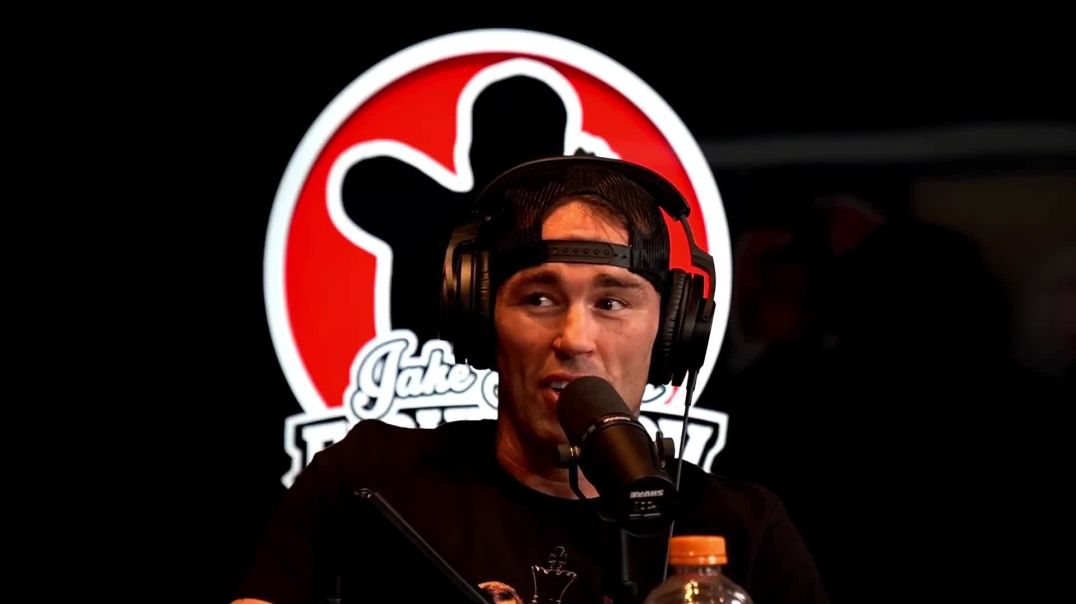

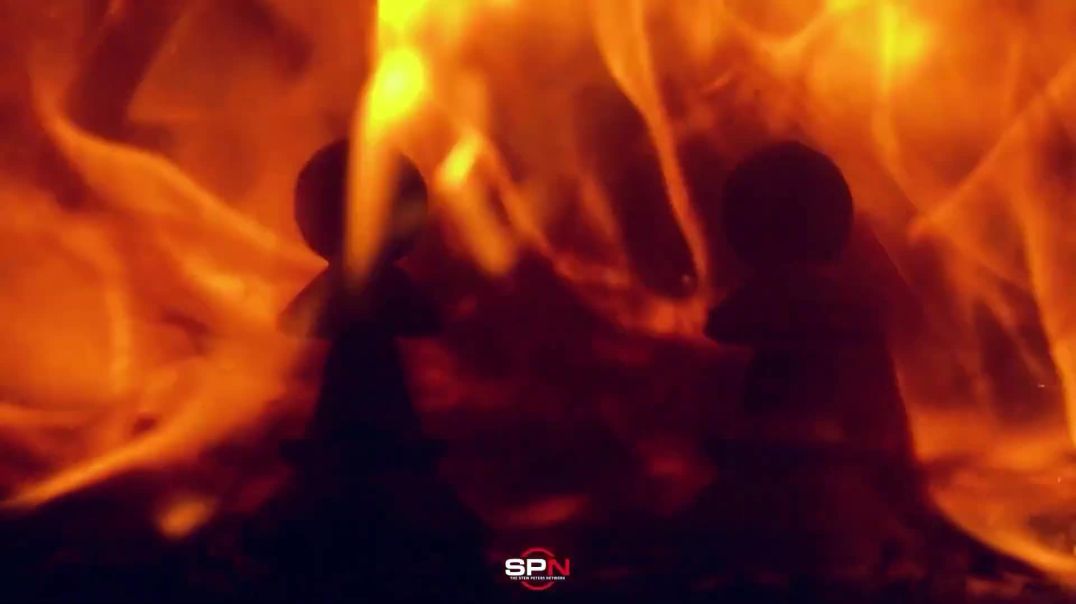


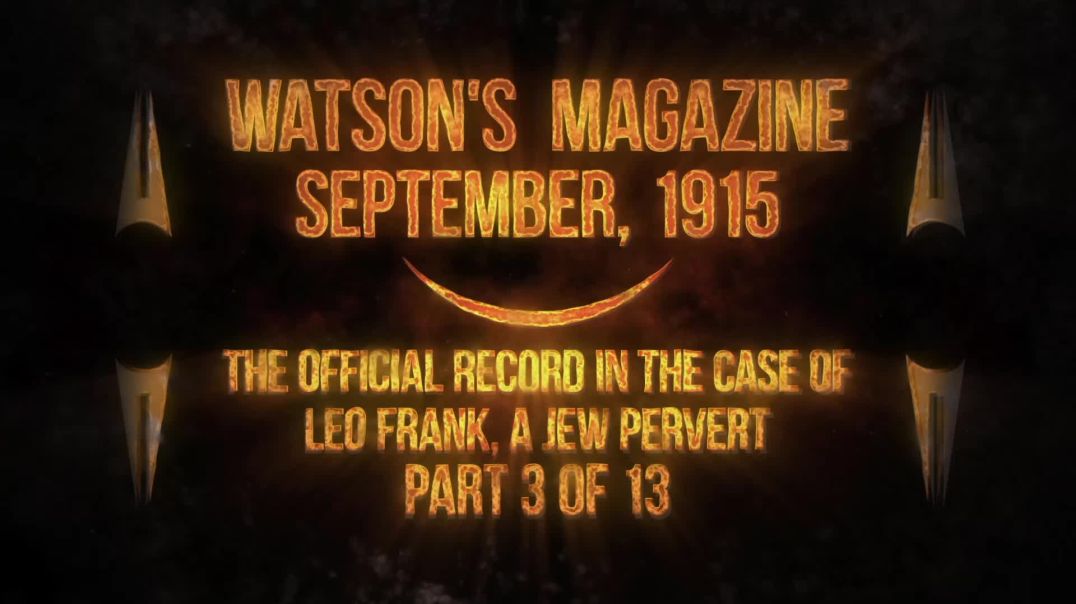

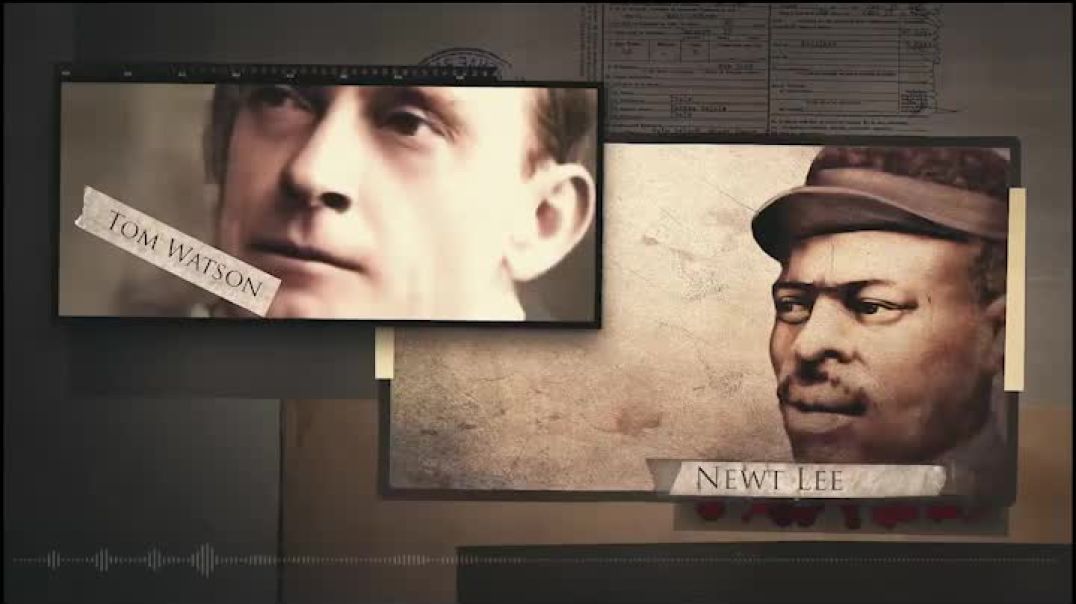
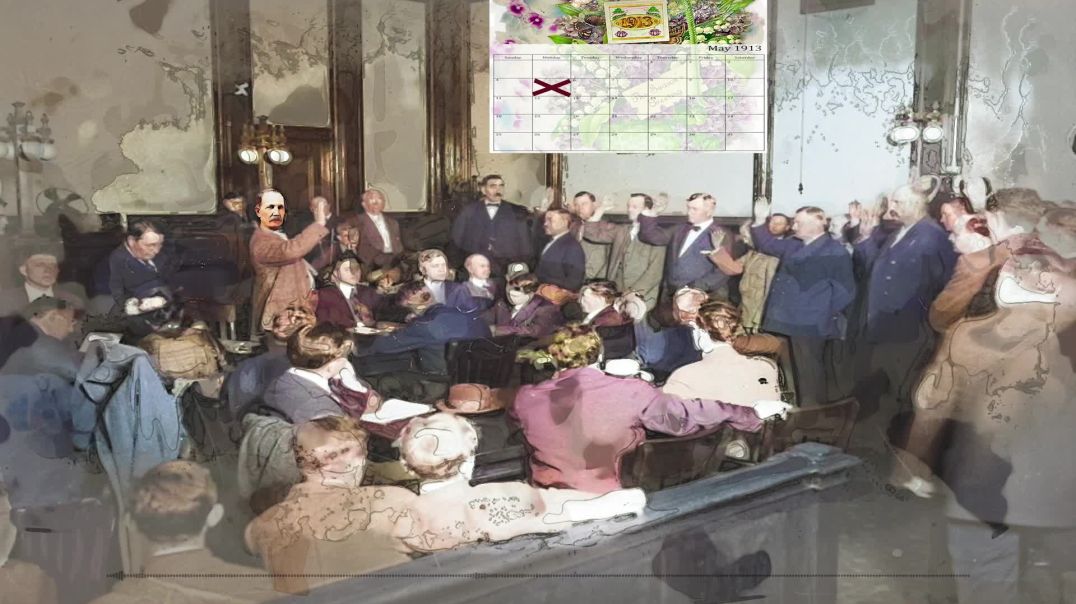
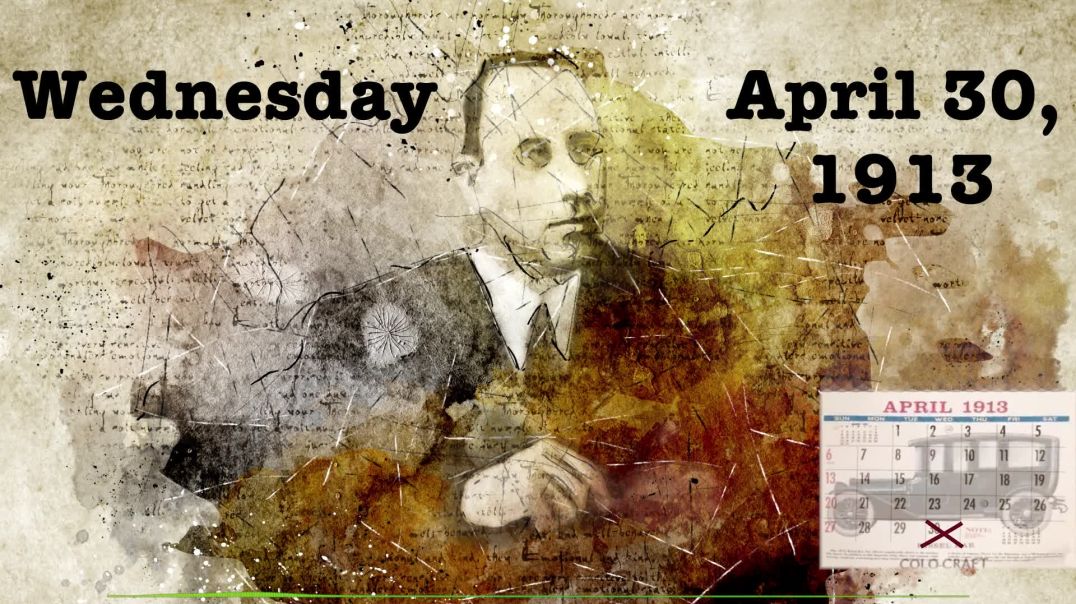
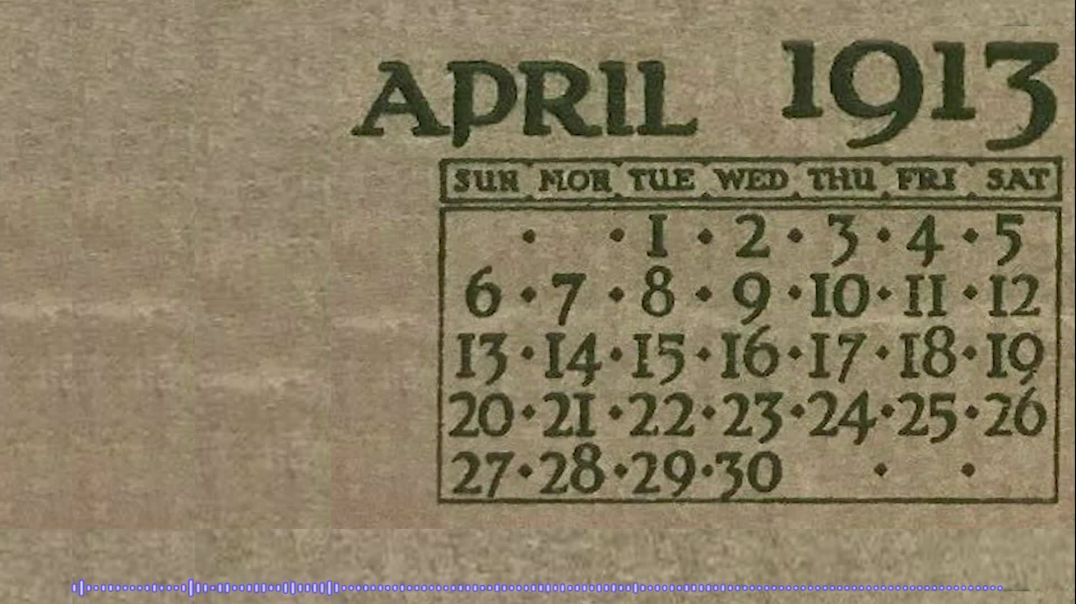
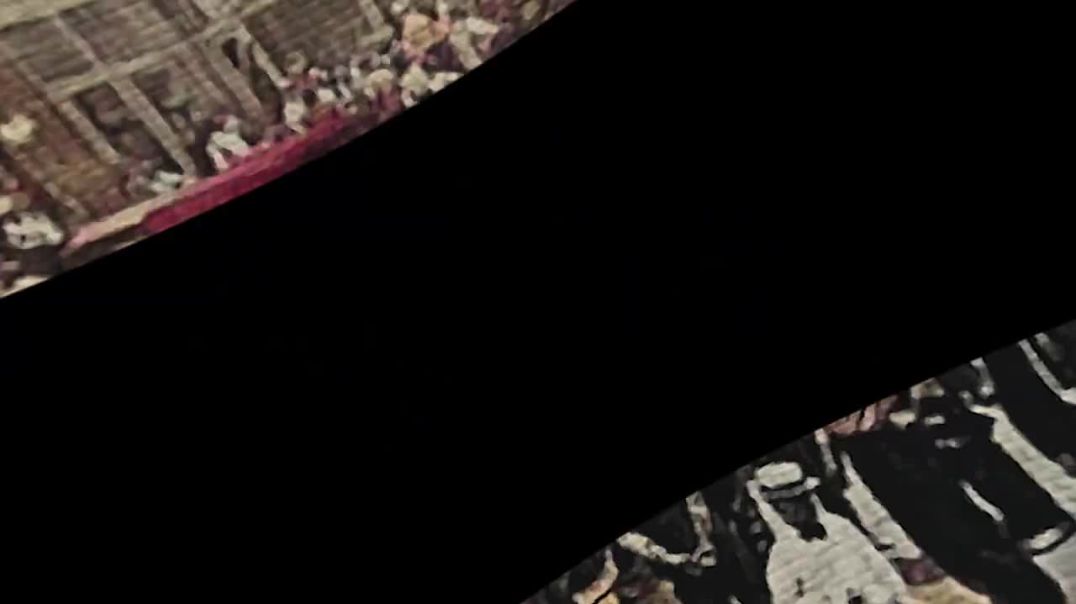

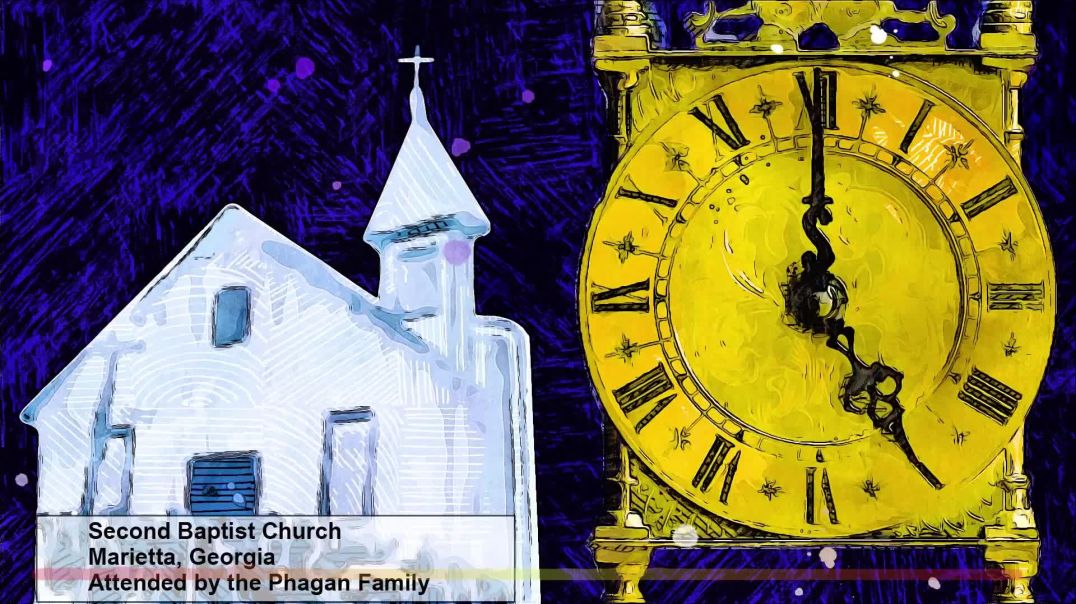
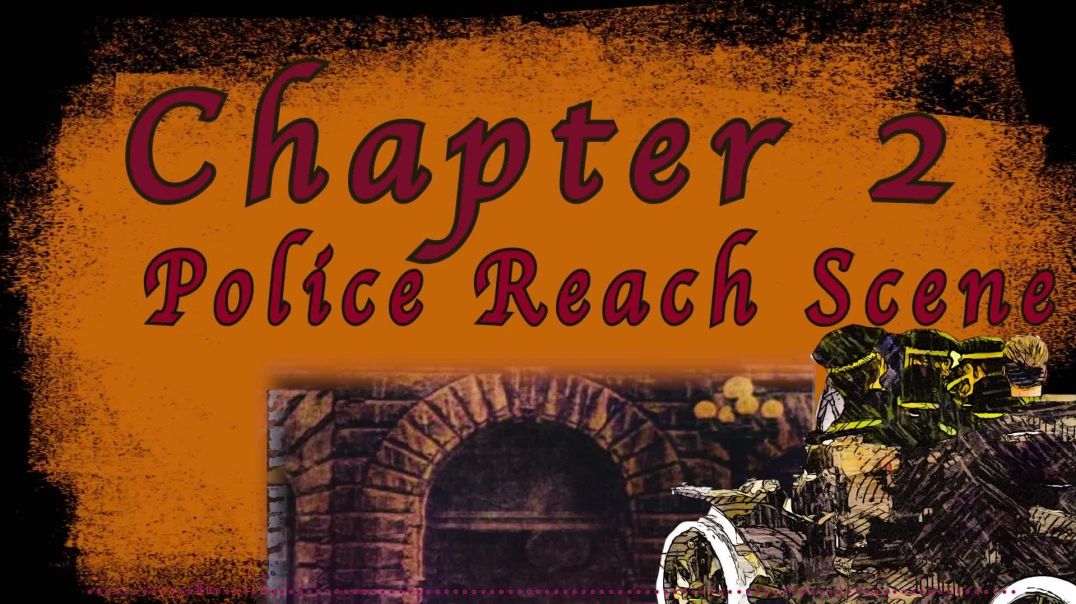

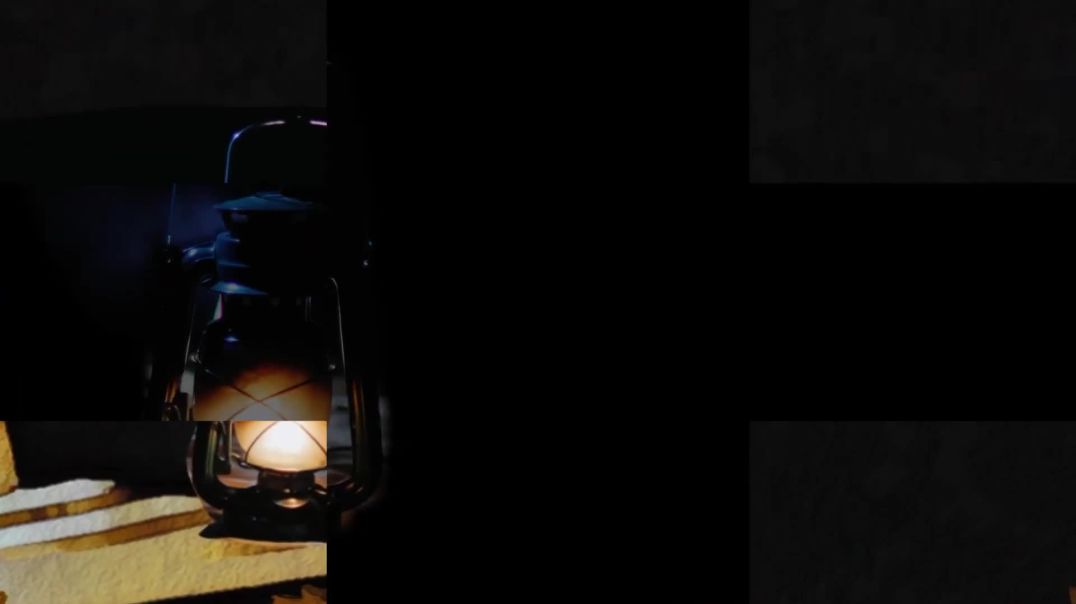
![Thank you, Jesus [MIRROR]](https://truthtube.video/upload/photos/2023/09/fIrkcXdkkVUSHojuXKqd_16_e5a3afe89167241d1fdc3b9ad7d31290_image.jpg)
![Gospel of John Summary - A Complete Animated Overview (Part 2) [MIRROR]](https://truthtube.video/upload/photos/2023/09/8bqbBJ5ZxO39SMtWpF5G_13_32f8ac792d1c3ab6e41adeb7e891247b_image.jpg)